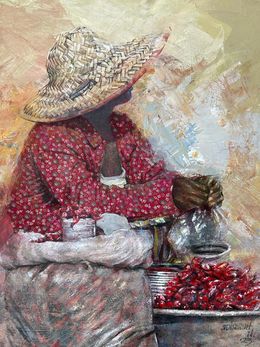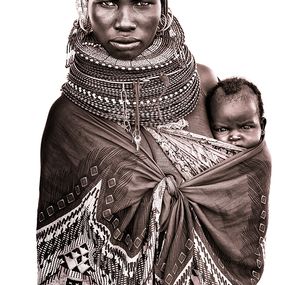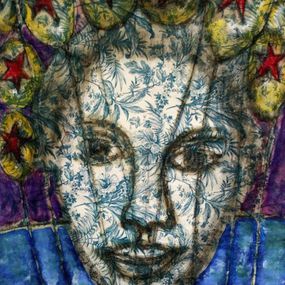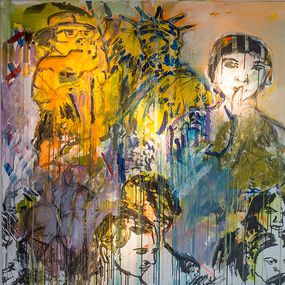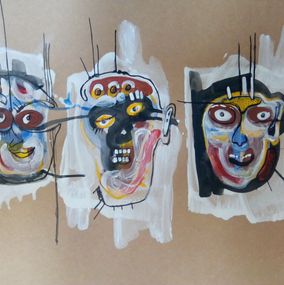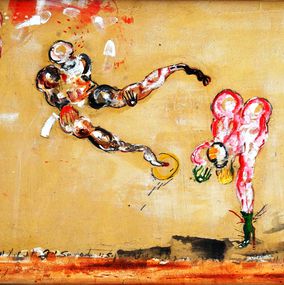
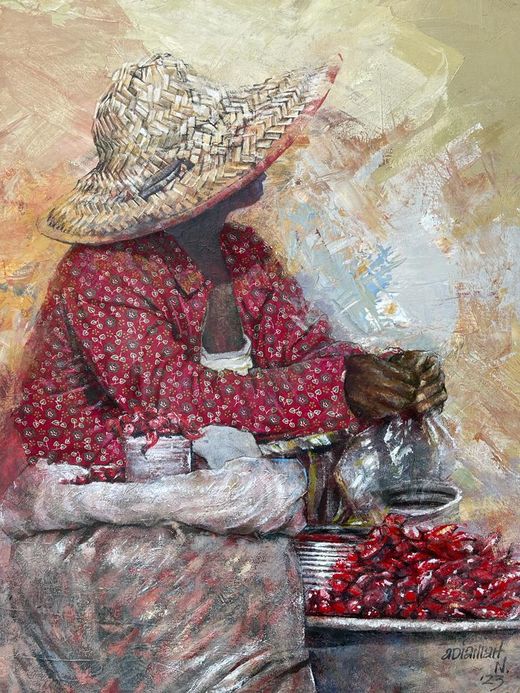
Biography
Emmanuel Adiamah was born in Ghana. He studied at the college of Art, followed by a degree at the University of Science and Technology. Later, he got a Postgraduated Diploma and a Masters in Art Education, and he startet to teach. Although he is not actively teaching now, he regularly organises talks and art workshops for students from Senior High School to the Tertiary at College or University level.
In his paintings, he uses different materials, as sand, paper and bark of trees. He has a penchant of using foreign-matter or found-objects with pigments. According to Adiamah, every object is a candidate for a work of art, because such good-for-nothing materials can be raised to the plane of aesthetic enjoyment. He has a wide repertoire of materials to excite his sense of creativity, as materials that would adhere to the surface of whatever support he uses. Adiamah's collage has evolved into a highly sophisticated level whereby from certain distances an observer finds it hard to distinguish non-paint material from pigment. This duality of interaction between these elements play tricks with the human retina. Due to this, sometimes an observer is forced to touch the surface of the artwork to re-orientate what he sees as content. Usually, Adiamah captures essential elements of local Ghana. His focus lies on the individuals whose collective vibrations make the local hubs and trade-centres the culture powerhouses they have become famed for. He gives the viewer a fascinating insight into unadulterated Ghanaian market culture through his full realm of remarkable genius and captivating imagery. Famous for the intricate detail, passionate expressions and immersive experiences employed in his art, Adiamah's works provide an introspective assessment of typical market life. From vivid representations of the lone preacher singing over the microphone, to the 'kaya ye' who idly wanders with her empty basin, his pieces are an all-inclusive memoir of life underneath the canopy of tattered umbrellas and creaky wooden stalls. Adiamah's most desired images are renderings of the women who dominate the market populace. Through his visual biopics, he pays homage to them for their toil, struggle and sacrifice. He paints the picture of them seated beside their unstable stalls of recycled crates and plastic buckets, arranging and rearranging their wares in an attempt to exhibit the freshest and most attractive. His inclusion of the raffia sun hats and loosely tied head wraps goes further to describe their strife at evading the sun that shines unforgivingly on their fast-wilting fresh produce. From Adiamah's works, it is easy to appreciate the hardiness, diligence and strength of the market women. The locale is highly saturated with such culture and vibrancy that in many places, markets have become listed sites of historic and architectural significance and are often popular tourist destinations. However, in the eyes of Adiamah's subjects, the market remains a haven- a community where sisterhoods are formed, families are raised, and where life goes on.
Nationality
Categories
Artistic movements
Themes







